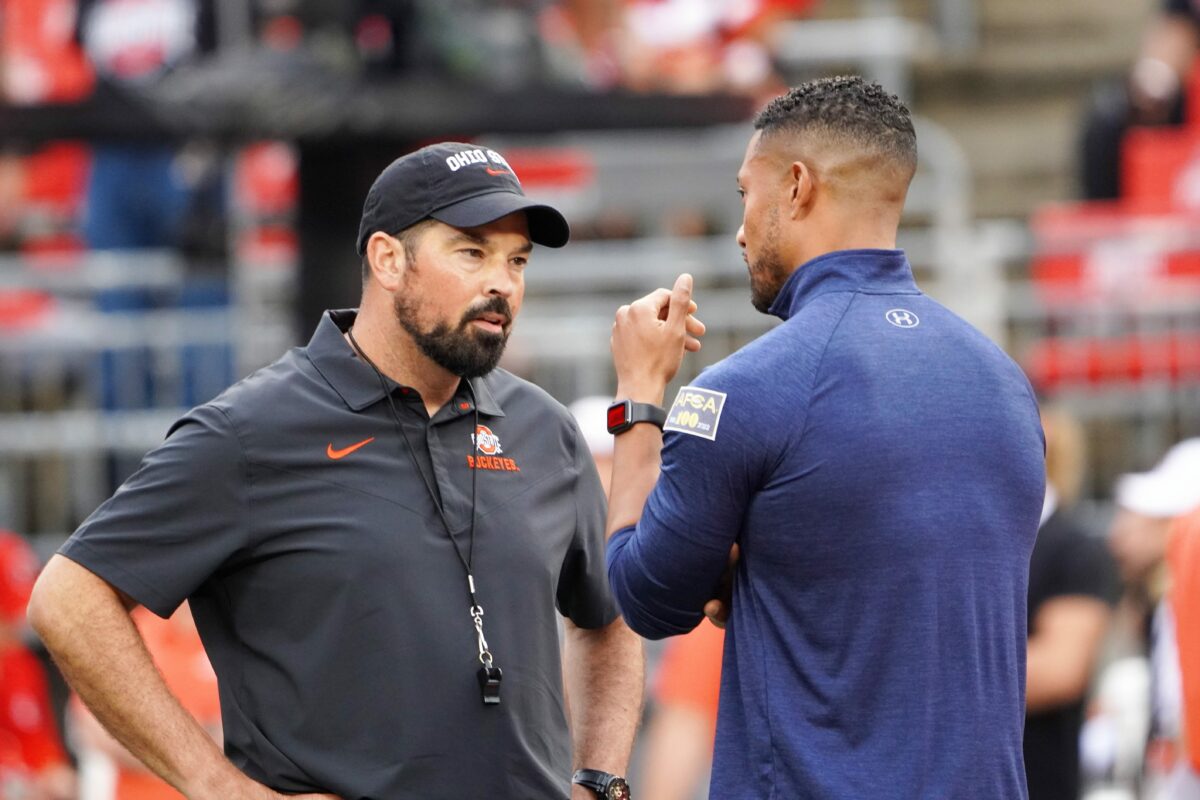One of the Ohio State co-authors of the study on myocarditis and COVID-19 says data was misconstrued and that it’s safe to play football.
One of the main reasons the Big Ten decided to postpone the fall football season amid the COVID-19 pandemic was emerging evidence that it led to a heart condition called myocarditis in some cases. In case you’re just now getting up to speed on that health complication (we can’t blame you), it is an inflammation of the heart some viruses can cause that may lead to complications, including death. It’s the same thing that the late head coach of Northwestern, Randy Walker, passed away with years ago.
Undetected, it can strike what appears to be an otherwise healthy individual, especially in the midst of strenuous exercise. American football conditioning and gameplay would fit that bill.
However, one of the co-authors of that study, Ohio State doctor Curt Daniels, now says the results were misinterpreted and misconstrued. In fact, Daniels believes the information should be used for a safe return to play as opposed to a reason to shut things down. He took some time to speak with Bill Rabinowitz of the Columbus Dispatch to expound further.
“I think we have a safe way to return to play,” Daniels told the Dispatch. “I hope that we will find a way to do so.”
Wait. What?
[lawrence-related id=37193]
[lawrence-related id=37179]
Even more so, Daniels was perplexed that the positive cases that were found using cardiac magnetic resonance (CRMs), as opposed to the more traditional means of EKGs and echocardiograms were focused on more than the ability to monitor the condition more effectively.
″‘My gosh, they found myocarditis, there’s no way we can play,’ ” Daniels said of the general reaction. “They’re putting it out there saying it’s not safe to play. They’re not reading the article. Or if they’re reading it, they’re just putting their own spin on it, like, ‘It’s not safe.’
“It’s actually the opposite. We’re saying we actually found this, but we know a path now to say it’s safe to go back as opposed to having this uncomfortable feeling of not knowing anything” about the actual risk.
Daniels also expressed frustration over a New York Times article sounding the alarm bell for something that he felt was positive news. He also cited the low statistical numbers that should have been taken with a grain of salt.
“There’s obviously an angle that somebody’s trying to take, not just based on the data, but trying to infer different pieces of information from what’s out there,” Daniels said. “And clearly, people have very strong opinions. I mean, this is a very important topic. It’s a big topic, and there’s very strong opinions, but they’re all opinions.”
This is all just crazy when you think about it. There have been so many decisions made based on data that is either incomplete, emerging, or taken the wrong way that it begs the question of who is making decisions in the ivory tower of the Big Ten.
I mean, in this case, the two doctors that published the study weren’t hanging out on the West Coast or somewhere in the Northeast, but right in the freakin’ footprint of the Big Ten, at a member institution nonetheless.
It appears the other co-author, Dr. James Borchers, is now on-board with the medical subcommittee to help transition (if possible) to a safe return to play, but where was he or Daniels when this data was being interpreted that was reportedly so key to making the call to shelve the season?
This situation only adds to the mountain of questions that are being asked, and for reasons that are hard to argue with. Maybe there’s more to it that we just don’t know about, but the silence from the Big Ten doesn’t help one bit.
[vertical-gallery id=36244]
Contact/Follow us @BuckeyesWire on Twitter, and like our page on Facebook to follow ongoing coverage of Ohio State news, notes and opinion.
We have a forum and message board now. Get in on the conversation about Ohio State athletics by joining the Buckeyes Wire Forum.





